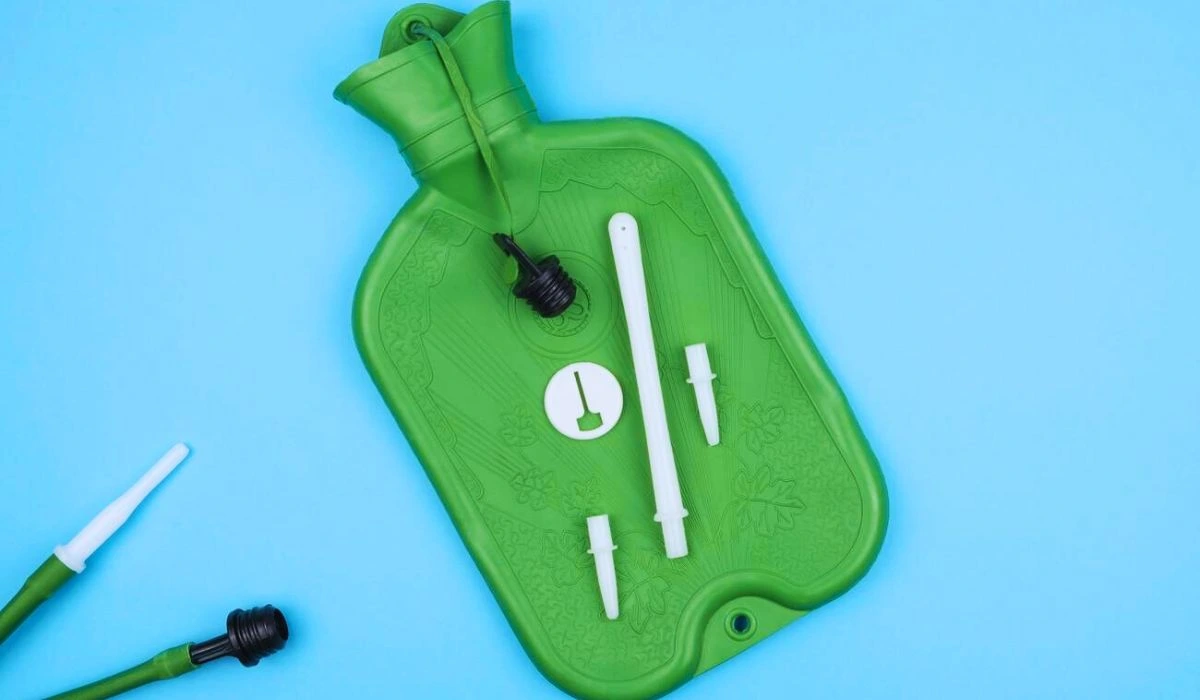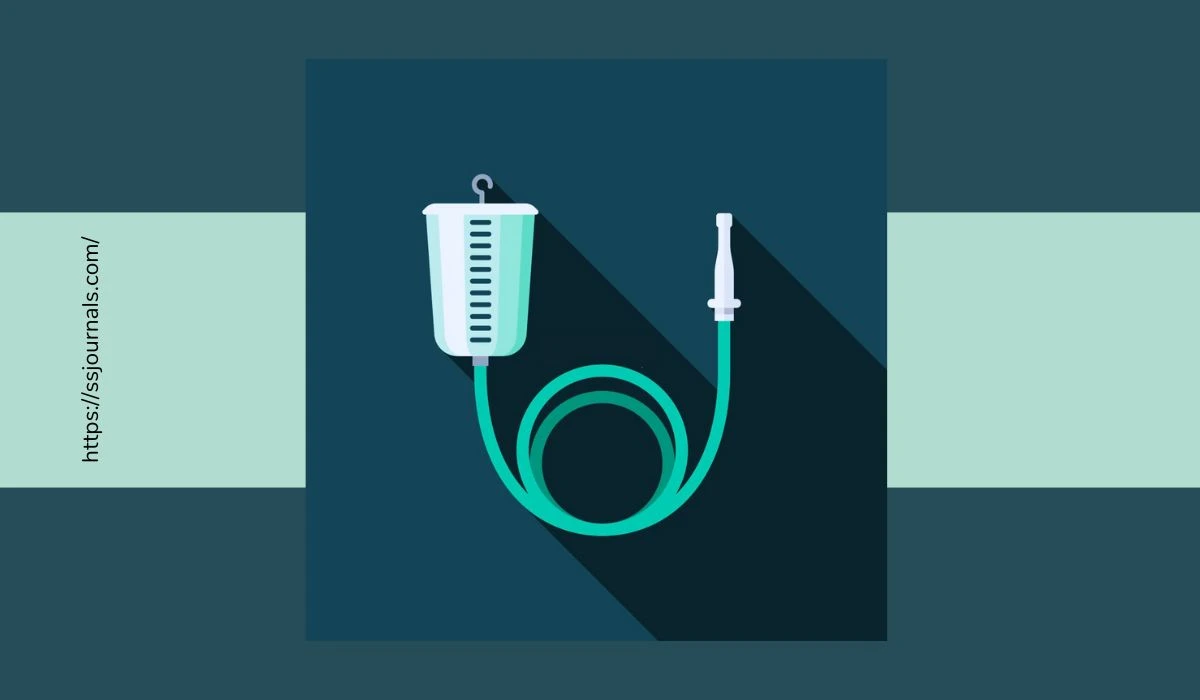An enema is a procedure that involves injecting fluid into the rectum and colon through the anus. It has been used for centuries to treat constipation and clear out the bowel before medical procedures or colonoscopy.
Though enemas were once common practice, they are now used less frequently due to advances in medicine. However, enemas still have benefits for certain gastrointestinal issues when recommended by a doctor. This article will provide an overview of what an enema is, its benefits, how it works, and frequently asked questions.
What Is An Enema?
An enema is the procedure of injecting liquid into the lower bowel by way of the rectum. The liquid is either inserted via a special medical device called an enema bag or bottle, or with a nozzle attached to a hose. The liquid injected, referred to as the enema solution, helps soften stool and induce bowel movements.

Enemas can be self-administered at home with over-the-counter kits. However, they are more commonly given by a doctor or nurse before certain medical procedures or tests. The main types of enema solutions include:
– Saline solution – contains salt and water to help draw fluid into the bowels from surrounding tissues via osmosis. This softens and loosens the stool.
– Soapsuds enema – contains a mild, non-irritating soap in warm water. The soapy solution helps lubricate and reduce the surface tension of stool.
– Oil retention enema – contains mineral oil to help stool slide down more easily through the intestines. The oil is held in place for up to 15 minutes.
– Barium enema – contains a barium sulfate solution that shows up on x-rays. It is used to get images of the colon.
The volume used for an enema may range from 150 to 700 mL, depending on the individual and purpose. Enemas are held in place from a few seconds to several minutes before being expelled.
Also Check: Small Intestinal Bacterial Overgrowth (SIBO) – How It Is Caused?
What Are The Benefits Of An Enema?
When administered properly, enemas can provide the following benefits:
- Relieve constipation – Enemas soften hard, impact stool, and cause bowel contractions to push out backed-up waste. This provides relief from discomfort, bloating, and other symptoms.
- Clear out the colon before procedures – Enemas are often used to cleanse the bowel prior to medical procedures such as a colonoscopy, surgery, or childbirth. This prepares the colon by removing debris.
- Remove toxins – Some proponents claim that enemas can remove toxins from the body. However, there is no scientific evidence to support detoxification as a benefit.
- Treat certain conditions – Enemas may be prescribed to treat specific conditions such as ulcerative colitis, and bowel obstruction, or before radiographic examinations.
- Ease cramping and pain – The warm liquid used in some enema solutions can help relax muscles and reduce painful spasms associated with conditions like diverticulitis.
- Lubricate the intestines – An oil retention enema coats the intestinal wall to allow impacted stool to slide down more easily.
When recommended by a doctor, enemas can provide relief in a safe, controlled manner. But it’s important to note they should only be used when medically advised and not excessively.
How Does An Enema Work?
There are several steps to administering an enema correctly:
💠Set up the equipment – Assemble the enema bag/bottle, tubing, clamp, and nozzle tip according to instructions. Lubricate the nozzle tip. Fill the enema bag with the appropriate, prescribed enema solution.
💠Assume the correct position – Lie on your left side with your knees bent close to your abdomen. Alternatively, kneel while leaning forward with your chest against the bed.
💠Insert the nozzle – Gently insert the lubricated nozzle tip 2-3 inches into the anus, pointing it toward the navel.
💠Release the clamp – Allow the enema solution to flow in by opening the clamp on the tubing. Go slowly to avoid cramping.
💠Retain the solution – Once all the liquid has entered, remove the nozzle. Remain in position and try to retain the solution for at least 2-5 minutes or as prescribed. Take deep breaths.
💠Expel the liquid – Sit on the toilet and allow yourself to pass the enema solution. Massaging the abdomen may help.
The enema process works by loosening stool, stimulating intestinal contractions, and lubricating the intestines. The injected liquid causes expansion of the colon, triggering it to contract and empty. This clears out the bowel.
Read More: Can Colonoscopy Detect Irritable Bowel Syndrome? Unveiling The Truth
Conclusion
Enemas have been used since ancient times and still have modern medical applications today. When performed correctly and for appropriate reasons, they can provide benefits such as relieving constipation, preparing for procedures, and potentially treating certain conditions. Enemas work by injecting liquid into the rectum, causing expansion of the colon which then contracts to expel its contents.
While generally safe when used appropriately, enemas do carry some risks. These include dehydration, electrolyte imbalances, bowel perforation in cases of obstruction, and infections if equipment is not properly cleaned. Overall, enemas should only be administered on the recommendation of your doctor.
Be sure to follow instructions carefully. With the rise of other treatments, enemas are now used much less frequently than in the past. But they can still provide therapeutic value for specific situations when recommended by a medical professional.
FAQ
A: Enemas should not be done routinely or excessively. Too frequent use can cause dependence and an imbalance of fluids and electrolytes. Enemas are generally considered safe for occasional use, but follow your doctor’s recommendations about frequency based on your individual health needs.
A: Enemas are typically not recommended during pregnancy unless specifically advised by your obstetrician. The fluids and pressure can potentially trigger uterine contractions and harm the pregnancy. Always consult your doctor first.
A: Enemas are generally safe when used correctly and for appropriate reasons. But there are some risks including fluid and electrolyte imbalances, infections, bowel perforation, and dehydration/diarrhea with over-use. Only take enemas when medically recommended and follow instructions carefully.
A: The amount of time an enema is retained depends on the type and reason for the procedure. Saline enemas are held in from 2-5 minutes. Oil retention enemas may be held for up to 15 minutes before expulsion, allowing the oil to lubricate the bowel. Always follow medical instructions for the proper retention time.
A: When done correctly, enemas should not be painful, but there may be some discomfort from cramping as the bowel contracts. Taking slow deep breaths while retaining the liquid can help you relax. Use lubrication and go slowly to minimize discomfort. Let your doctor know if you experience significant pain.

